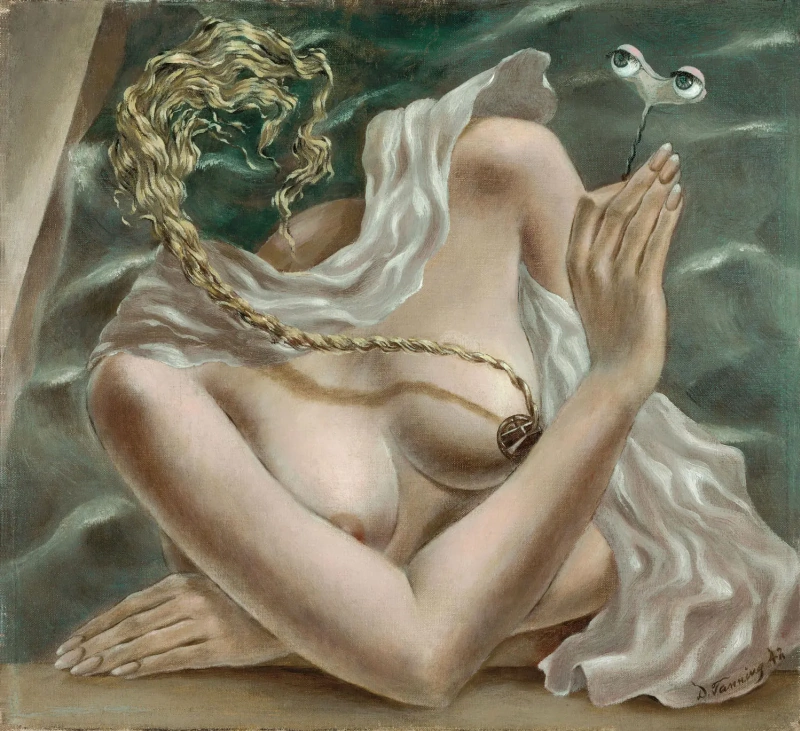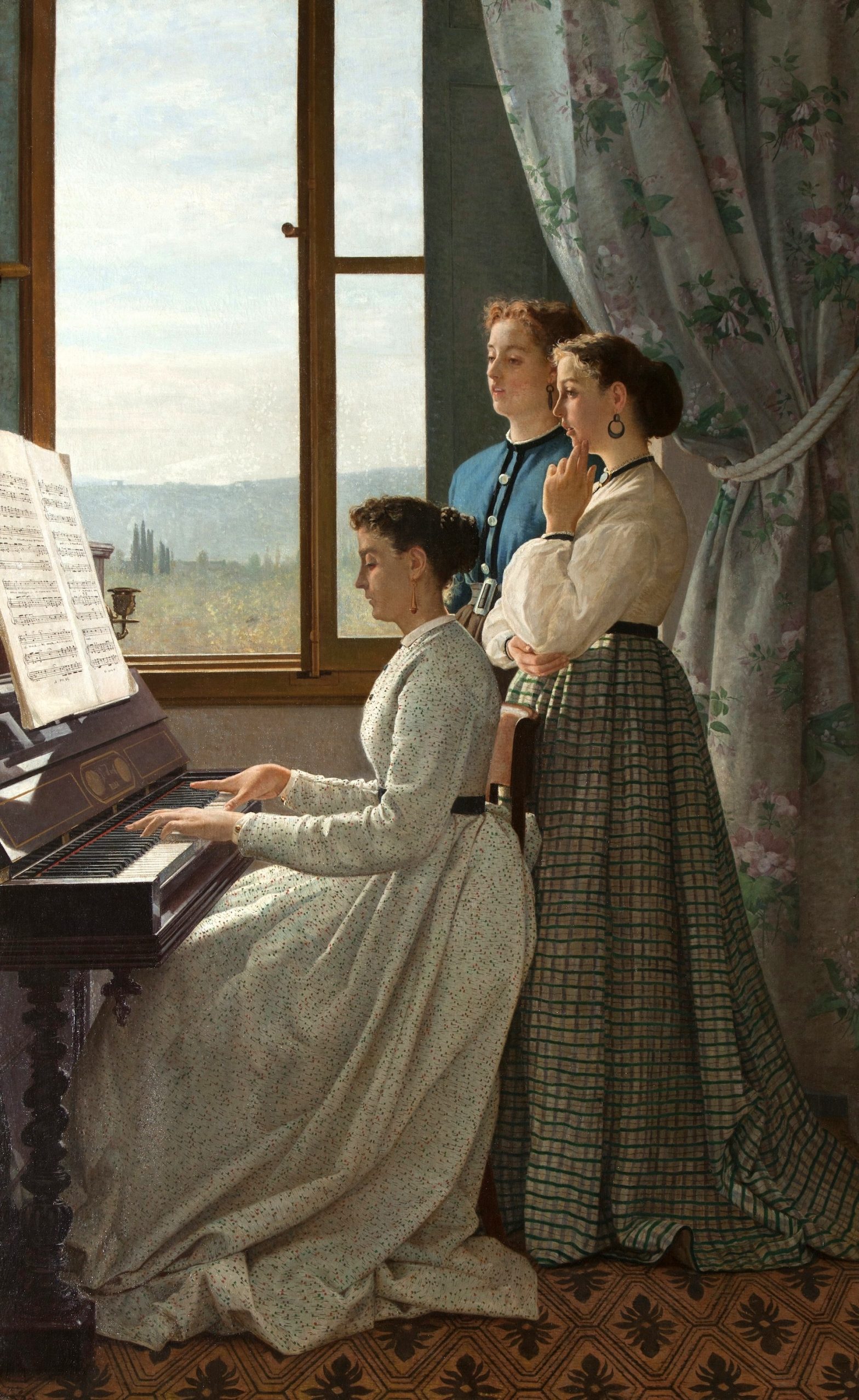Poetry Fragments of thought (Catharsis, 2022) All at once Unknown (Pinterest, 2022) Where forever is just an amount ofa short time and falling out of love seems possible now more than ever. Read my other post Poetry Quiet Partings Read More Poetry Fading Petals: Soft Departure Read More Load More Stay Connected. Instagram Pinterest
Category: Art
A brief history of John Singer Sargent’s “Carnation, Lily, Lily, Rose”
The story behind John Singer Sargent’s artwork Carnation, Lily, Lily, Rose (1885-1886) is an oil on canvas painting by American artist John Singer Sargent. The painting depicts two small children dressed in a vintage white long dress who are lighting lanterns in a garden with pink roses that seems to be spreading all over the place, with accents of yellow carnations and tall white lilies behind them. The main objects are the daughter of the illustrator Frederick Barnard – a dear friend of the artist. On the right side is Dolly Barnard (11 years old), while on the left side is Polly Barnard (7 years old). The inspiration for the unique lighting effect came during Sargent’s trip to River Thames at Pangbourne with his fellow American artist Edwin Austin Abbey in September 1885. He saw lanterns hanging among trees and lilies during the journey while boating. At that moment, he had this urge to capture the precise light level at dusk, so he painted the picture en plein air – a French term for ‘painting outdoors’ perfectly mixed with an impressionist style. He would place his easel and other tools beforehand and pose his models in anticipation of the few moments when he could paint it at a perfect time. From September to November 1885, he painted its artwork in the few minutes when the light began to turn its color – blending in perfectly, catching its delicate shades before the light faded into the evening when the sun started to sets as far to the southwest. The flowers in the garden seem like it has died and been replaced with artificial flowers as summer has turned into autumn; as expected, something would change when the seasons change. He finished this artwork the following summer at Millet’s new home nearby Broadway by the end of October 1886. The painting is dominated by green foliage, with no horizon that, in other words, seems to give a sense of depth. Carnation, Lily, Lily, Rose is set in an English garden at Farnham House on Broadway in the Cotswolds, where Sargent spent the summer with Francis David Millet around 1885, shortly after moving to England from Paris. Carnation, Lily, Lily, Rose was first exhibited in the Royal Academy’s Summer Exhibition in 1887. The painting received a critical reception from its audiences. However, it also received praises and well-deserved recognition from audiences and critics and is known as an “extremely original and daring essay in decoration.” The Royal Academy immediately purchased the painting for the British nation through Chantrey Bequest, a special trust fund established by Sculptor Sir Francis Chantrey in 1875. Royal Academy President Lord Leighton and the other Royal Academicians, including Sir Lawrence Alma-Tadema and William Quiller Orchardson, supported the acquisition. Details Artist: John Singer Sargent Title: Carnation, Lily, Lily, Rose Date: 1885 – 1886 Style: Impressionism Genre: Genre painting Location: Tate Britain, London, UK Dimension: 153.7 cm x 174 cm Oil on canvas The viewers can visit its painting at Tate Britain, London, UK. It has now become one of the gallery’s most loved paintings. Tate ↗ Reference Wikipedia ↗ Wikiart ↗ Reference Royal Academy ↗ Reference
When love comes knocking
when love comes knocking(at my door) Unknown (Pinterest, 2022) Love came when I started to look for other things in life – a new perspective; a new way of thinking Poetry Fragments of thought (Catharsis, 2022) He came when I least expected it. Read my other post Poetry Quiet Partings Read More Poetry Fading Petals: Soft Departure Read More Load More Stay Connected. Instagram Pinterest
About Girl with a Pearl Earring by Johannes Vermeer
The Girl with a pearl earring (meisje met de parel) is an oil on canvas by Dutch Golden Age painter Johannes Vermeer in 1665. This work of art has been in the collection of the Mauritshuis in The Hague since 1902 and has been the subject of various literary as well cinematic treatments. Girl with a pearl earring is not a portrait but a ‘tronie’ – a painting of an imaginary figure. In Dutch, it means the head of an ideal “type,” like “a soldier” or “a musician” – or in this case, “a young beauty.” The painting depicts a European girl wearing an exotic dress, an oriental turban, and the famous eye-catching pearl earring. Girl with a pearl earring portrays a young woman in a dark, shallow space, an intimate setting that exclusively draws the viewer’s attention to her. In this painting, the girl wears a blue and gold turban, a titular pearl earring, and a gold jacket beneath with a visible white collar. Caught in a fugitive moment, she turns her head over her shoulder, meeting the viewer’s gaze with her eyes wide and lips parted as if about to speak. Her enigmatic expression and the mystery of her identity are what intrigues the painting more. The Girl with a Pearl Earring Title: The Girl with a pearl earring (meisje met de parel) Artist: Johannes Vermeer Year: 1665 Style: Baroque Genre: Portrait, tronie Dimension: 46.5 cm x 40 cm Location: Mauritshuis, The Hague, Netherlands Oil on canvas
Voltage by Dorothea Tanning
Dorothea Tanning was an American Surrealist artist who was born in Galesburg, Illinois, USA, in 1910. She was a successful commercial artist while continuing to pursue her painting. “Art has always been the raft onto which we climb to save our sanity. I don’t see a different purpose for it now“ She described most of her artwork with an exciting coefficient between the objects and its styles, which successfully caught many viewers’ attention. Her work of art was notable for its interest in actual female experience while exploring the unconscious – the inner, deepest dreams – and creativity. Most of her Surrealist artwork reveals disheveled female figures in domestic settings, depicted in a state of sensual reverie, to subvert gender expectations. In contrast, others take the more traditional route of assembling mismatched objects into strange still-lifes, to no less intriguing or disquieting effect, quite the opposite of her imagery. Tanning’s artwork and this one are featured in the Fantastic Women Exhibition. The painting is now in a private collection in Germany. Unfortunately, there is still no further details information about this artwork. Voltage Artist: Dorothea Tanning Title: Voltage Date: 1942 Style: Surrealism Subject & Object: Nudity Dimension: 28.3 cm x 30.8 cm Location: Private Collection, Germany Oil on canvas
Il canto dello Stornello by Silvestro Lega
Il canto dello Stornello (The Folk Song) painted by Il canto dello Stornello in 1868 ITALIAN PAINTINGS Artist: Silvestro Lega Title: Il canto dello Stornello (The Folk Song) Date: 1868 Style: Realism Dimension: 158 cm x 98 cm Location: Palazzo Pitti, Florence, Italy Oil on canvas
Giorgione Homage to a Poet
The subject of this painting is dubious – a melancholy man figure in crown sits with book in between his feet as a little boy approached him. A young man sitting on the step plays a lute while another man kneeling at front as he offers a bowl of flowers. All seems like have taken off their hats respectfully. On the left side, there is a hermit appears in a cave in the rock face. The meaning of the figure remains unknown. Artist: Giorgione Title: Omaggio a un poeta (Homage to a Poet) Date: Early 16th century Art movement: High Rennaissance Dimension: 597 cm x 489 cm Location: The National Gallery, London, UK Oil on wood
René Magritte Les Amant The Lovers 1928
Les AmantsThe LoversRené Magritte Surrealism The Lovers, Surrealist Painting The lovers is one such painting that intrigues and holds so much mystery. It is an example of how simple artwork awakens the most complex meanings, exciting stories, and emotions. This painting was created by one of the most famous French artists, René Magritte, in 1928. It is known that most of his artworks are themed on frustrated desire, yearning for love, and craving for lust. The lovers have four variations (take a look at the paintings down below). However, the two of them are pretty well-known by viewers worldwide. One of them is painted in a close-up scene of two lovers, locked in a tight embrace, transfiguring an act of passion and intimacy into one of isolation and frustration, a frustrated desire – with faces covered in cloth. Enveloped faces were known for Magritte’s motif on his creation. In all series of these paintings, the women are entirely covered in veils which is enough to interpret passion, love, and genuine intimacy. It shows that if this is about two lovers, it can be described as “love is blind’. When two people are in love, they are so deep and passionate about their feelings that they do not notice anyone or anything around. It’s blind, it drives one’s mind crazy, yet it’s beautiful – it’s worth the risk and everything that needs to be sacrificed. Some have interpreted this artwork to depict the inability to fully unveil the essence of relationships and the difficulty of sharing its passionate and intimate moment – even with the people they considered as their close ones. Portrait of René Magritte’s Mother Some also speculated that his trauma, his tragic past, inspired this painting. At the age of 14, Magritte’s mother was committed suicide, and her body was found in the River Sambre. At that time, he witnessed her whole body being fished from the water, with her face wrapped by her wet nightgown. However, he has said it clear in one of his interviews that it has nothing to do with his past – it is simply just a painting that holds so much mystery, just like his other paintings. Another version was voiced out, as it said he was very fond of Fantômas – still, nobody knows the woman’s identity hiding her face under the mask. Les Amants (The Lovers), 1928 The lovers are situated in a room with the back wall, sidewall, and ceiling showing a bit. The color of the back fence is blue-grey with a lighter shade on the bottom half and a darker shade through the top half. The sidewall is brick red which both have darker and lighter shades. The ceiling is colored in white and has a decorative trim along the border of the wall; however, it isn’t fully colored along the perimeter of the blue-grey wall. Both figures have a whitish veil that covers their faces and necks completely. The coverings are tight against the front and top of the head and loose towards the back. The male figure wears a black suit and ties with a solid white shirt that seems to be formal. He embraced the woman who dressed in a red, sleeveless garment with white trim – tanned arms fully exposed. The man looked like he was in a dominant position relative to the woman. These two figure seems to be in an intimate atmosphere as she tilts her head up while he leans down, trying to kiss her hungrily, passionately. The way she slightly tilted her face to the left gives her lover more access to her lips and makes her lover more prominent, and reveals the distinct outline of his nose. However, if to look closer at her body position, she is leaning backward a bit. It is, for sure, provokes a mystery that quite hard to put its real meaning. The elements in this painting are the veils, the room, and the two figures. Many viewers wonder if this is a kiss of denied love or honestly and simply just a lover engaged in a romantic time together – alone. The deathlike cloth keeps the two figures at a distance, but the intimacy is there – it is as if to tell that barriers do not exist when it comes to love. The room is painted in a mysterious yet inviting setting – colored in bold colors with no windows at all. However, the lovers are the primary object; it creates an atmosphere of mystery and conspiracy, making this painting more fascinating and thought-provoking. René Magritte, Surrealist Artist Magritte’s vision in this painting is simple yet quite interesting as it involves a deep feeling, deep meaning. For Magritte himself, he wanted the viewers to have their perspective – translated its painting just by observing the whole details, concluding each meaning. Indeed, he is a genius, brilliant artist that deserves to be remembered as one of the greatest artists of all time. The lovers painting can now be viewed at the Museum of Modern Art (MOMA), New York City, USA. It remains a part of an iconic work of surrealism. Series of The Lovers The Lovers I The Lovers II The Lovers III, Private collection The Lovers IV, Private collection TRENDING TODAY Quiet Partings The Old Guitarist by Picasso: Understanding The Artistic Genius Behind the Canvas Fading Petals: Soft Departure Art Appreciation: ‘The Tortoise Trainer’ by Osman Hamdi Bey Love within yourself see my other page The Old Guitarist by Picasso: Understanding The Artistic Genius Behind the Canvas Read More Art Appreciation: ‘The Tortoise Trainer’ by Osman Hamdi Bey Read More A brief history of John Singer Sargent’s “Carnation, Lily, Lily, Rose” Read More Voltage by Dorothea Tanning Read More Load More Stay Connected. Instagram Pinterest
Unrevealed
Poetry Fragments of thought (Catharsis, 2021) Peace,at last VII Portraits (Pinterest, 2022) They have read many stories – but the truth remains a mystery. Read my other post Poetry Quiet Partings Read More Poetry Fading Petals: Soft Departure Read More Load More Stay Connected. Instagram Pinterest
The Lovers René Magritte
RENÉ MAGRITTEPAINTING 1928NEW YORK CITY MOMA Title: Les Amants (The Lovers) Artist: René Magritte Published: 1928, Paris, France Style: Surrealism Period: Surrealist Paris years Genre: Symbolic painting Location: Museum of Modern Art (MOMA), New York City, NY, USA Dimension: 54 cm x 73,4 cm Oil on canvas RENÉ MAGRITTE THE LOVERS







